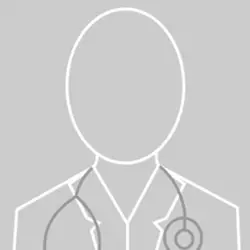Flu
"Certain risk groups are vaccinated against the flu annually in the fall to prevent it".
DR. JAVIER NICOLÁS GARCÍA GONZÁLEZ
SPECIALIST. INTERNAL MEDICINE DEPARTMENT

The flu is an acute infectious disease, which affects the respiratory system and also produces a series of characteristic general symptoms. It usually appears in outbreaks or waves, several throughout each winter, and is a disease of worldwide distribution.
Although it is usually a self-limited and mild disease, it can become more serious and even fatal in elderly patients or those with chronic, respiratory, cardiac or other diseases.

What are the symptoms of the flu?
The clinical picture, of sudden beginning, usually produces headache, fever, general malaise and generalized muscle and joint pain. This is accompanied to a greater or lesser extent by respiratory symptoms such as cough, sore throat and nasal distillation. The symptoms can be very variable of some individuals to others, as well as their intensity and duration.
Sometimes digestive symptoms such as abdominal pain, nausea or diarrhea may also occur.
Habitually the general symptoms improve spontaneously in the first 72 hours after their beginning, whereas the respiratory symptoms can worsen in those first days. The symptoms usually last between 2 and 5 days, so that most of the sick people are asymptomatic in the week of the beginning of the illness.
Sometimes, patients may experience persistent fatigue after the acute episode, which has been called post-viral asthenia syndrome.
The most common symptoms are:
- Headache.
- Fever.
- General malaise.
- Muscle and joint pain.
Do you have any of these symptoms?
You may have the flu
How do you prevent the flu?
There is a vaccine against the flu virus, which is made annually with inactivated virus, depending on the type or types of virus that were responsible for the epidemics last winter.
With this vaccine, protection between 50 and 80 percent is achieved. It should be administered around the month of September, and it is advisable in any person and indicated especially in the elderly or chronically ill, cardiac, respiratory, renal, etc.
Exceptionally, prevention can also be considered with some of the antiviral drugs used in the treatment.
Antiviral drugs work best if they are started immediately after the person becomes ill (within two days of illness onset).
What are the complications?
The most common is influenza pneumonia, as well as superinfections of the respiratory tract by other germs, mainly bacteria.
These complications are more frequent and severe in patients with chronic cardiac, respiratory, renal and other disorders.
In children, especially if they are treated with aspirin, Reye's syndrome can occur, with hepatic and cerebral affectation, which can be fatal.
How is the flu diagnosed?

The diagnosis of influenza is made through medical history and physical examination. Additional testing is usually not necessary.
The flu is caused by a group of viruses called influenza viruses, of which there are three types: A, B, and C.
Most flu epidemics are caused by type A flu viruses, while type B causes less extensive epidemics and milder illness, and type C causes very rare illness.
The flu virus is spread from person to person, usually through respiratory secretions, by coughing and sneezing.
How is the flu treated?
In most cases, symptomatic treatment of fever, muscle aches and headache is sufficient, preferably using paracetamol.
Relative rest and good hydration are recommended.
In recent years some specific antiviral drugs have been developed for the influenza virus, first amantadine and rimantadine, and more recently zanamivir and osetalmivir.
Although these drugs are effective in reducing the duration and intensity of symptoms, especially if treatment is started quickly after onset, they have not been shown to reduce serious flu complications, so they have not been widely used to date.
For the time being, its indication is restricted to those cases in which, due to immunosuppression or other circumstances, a greater difficulty in curing the disease is expected.
Where do we treat it?
IN NAVARRE AND MADRID
The Department of Internal Medicine
of the Clínica Universidad de Navarra
Its integrative vision and polyvalence allow us to provide the best medical assistance to multipathological and multisymptomatic patients, who present a difficult diagnosis or who suffer from prevalent diseases of a hospital nature.

Why at the Clínica?
- State-of-the-art diagnostic technology.
- Quick diagnosis to start the most appropriate treatment early.
- Teamwork with the rest of the professionals in the Clinic.



























